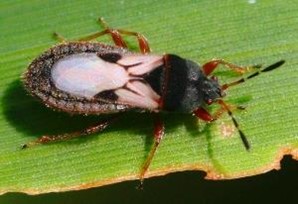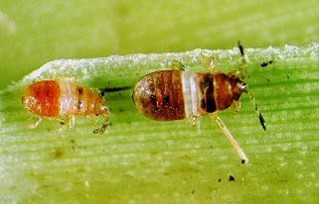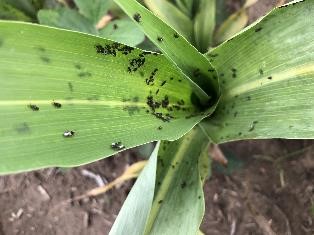Chinch Bug Damage in Grain Sorghum
I have received reports of chinch bugs moving into sorghum fields across the state.
Overwintered adults emerge from grassy areas in early spring and fly into small grains where they mate and produce the first generation. Most problems in sorghum occur when large groups of the immature, wingless nymphs migrate from maturing wheat fields and invade adjacent corn or sorghum fields where they attempt to complete development. They typically do not infest the entire field but can take out several rows of sorghum next to the wheat.
Description
Adults are small, black bugs about 4 mm in length and have a distinctive black-on-white ‘X’ pattern on the wings (Fig. 1). Immatures or nymphs are wingless and bright red after hatching, then darken as they approach maturity (Fig 2). All nymphs have a characteristic white band across the middle of the body, although this feature becomes partially hidden by the developing wing pads as it matures. There are 2 -3 generations per year of chinch bugs in Oklahoma.
Figure 1. Chinch bug Adult. KSU.
Figure 2. Chinch bug nymphs
The risk of first-generation damage is greater where sorghum is planted next to stands of wheat (Fig 3). Seedling sorghum is the most vulnerable. Two to three bugs per plant can cause stunting, poor root development, stand reduction, and even death of some plants. Larger plants can tolerate greater numbers, but severe infestations can cause stunting, lodging, and yield loss (Fig 4-6). Since corn is planted earlier and is more resilient at the time of nymphal migration, damage can be minimal, if any to corn and usually confined to border rows.
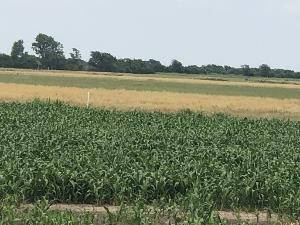

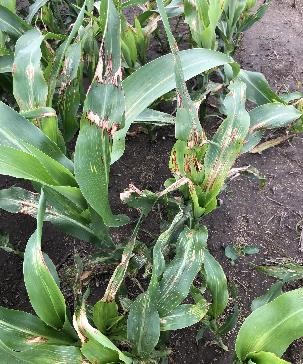
Management
Using seed treatments: Poncho® or Cruiser® at planting can potentially decrease chinch bug damage and may protect plants for up to 3 weeks. Follow-up sprays on border rows and a border outside the field may be needed if protection wears off before the end of chinch bug migration. Many times, damage is noticed only after several rows of sorghum have been severely stunted or killed. Ideally treating border areas promptly as migrations begin, before significant numbers of bugs enter the field, and small plants are affected is best.
Treat the whole field if the infestation is widespread. Chinch bugs can be difficult to control, especially as the sorghum gets taller. For sorghum that is seedling to V-7 growth stage, consider banding the spray over the row. For taller plants, ground applications using 20 to 30 gallons of water per acre and directed at the base of the plant provide the best option for control.
Continued monitoring is required to determine if additional applications are necessary.
More information on chinch bug in sorghum can be found at EPP-7170 “Management of Insect and Mite Pests in Sorghum".

